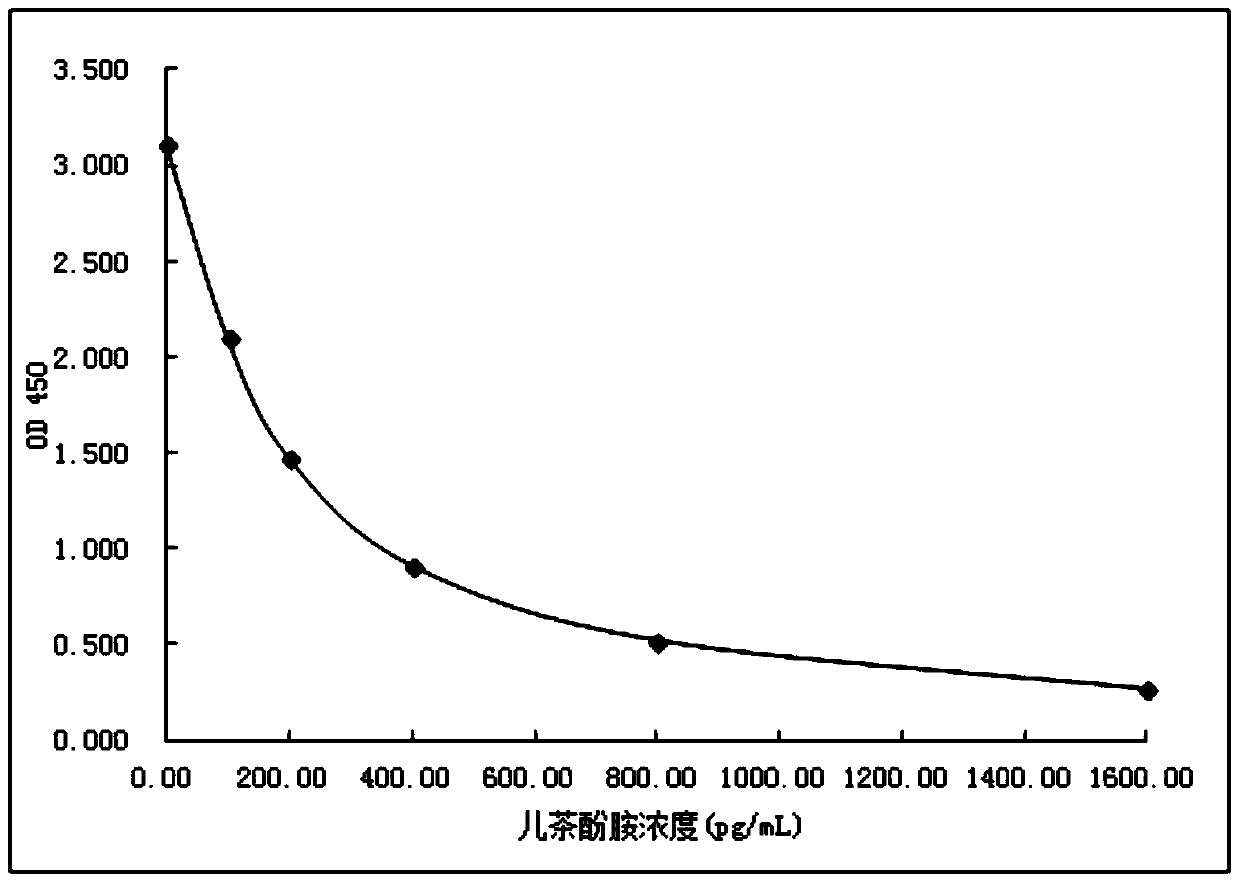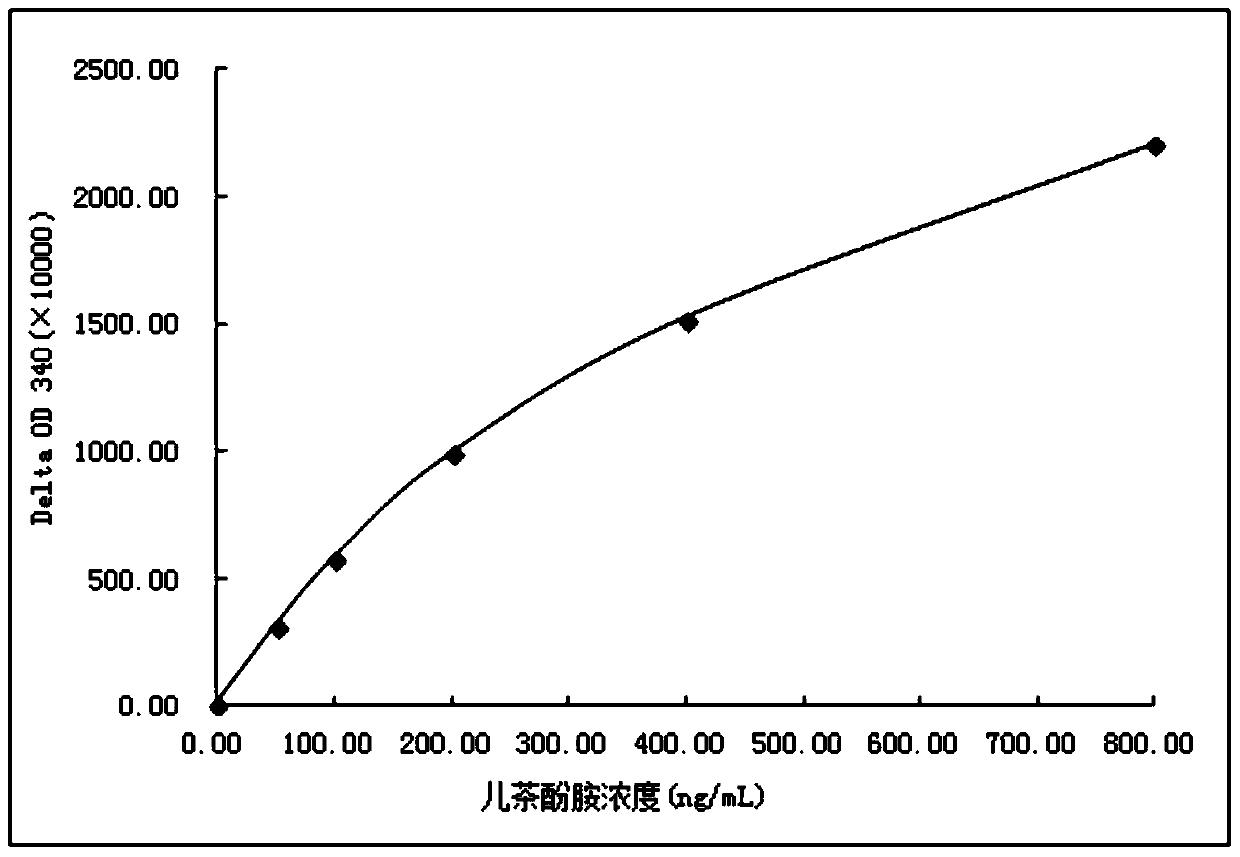Catecholamine immunogen, derivative and synthesis method, specific antibody and detection reagent and preparation method
A catecholamine, immunogenic technology, applied in the fields of specific antibodies and detection reagents and preparation, catecholamine immunogens, derivatives and synthesis, can solve problems such as the limitations of clinical large-scale application, reduce detection costs, immunogenicity High, specific effect
- Summary
- Abstract
- Description
- Claims
- Application Information
AI Technical Summary
Problems solved by technology
Method used
Image
Examples
Embodiment 1
[0067] Example 1 Synthesis and Quantitative Detection of Catecholamine Derivatives
[0068] The chemical structure of catecholamine derivatives is shown in formula (Ⅲ):
[0069]
[0070] The synthetic route and preparation steps of the above-mentioned catecholamine derivatives are as follows:
[0071]
[0072] Concrete synthetic steps are as follows:
[0073] Synthesis of compound 2
[0074]
[0075] 1) Weigh 20.41g (147.9mmol) of compound 1, 25.29g (147.9mmol) of benzyl bromide and 30.62g (221.9mmol) of K 2 CO 3 , were dissolved together in 200 mL of acetone, and stirred overnight at room temperature. Thin-layer chromatography (TLC) detection showed that the reactant had reacted completely. The reacted synthetic solution was filtered, the filtrate was concentrated in vacuo, and the residue obtained after concentration was diluted with 300 mL of EA. Rinse the organic layer with 200mL purified water and 200mL brine, pass Na 2 SO 4 Drying was carried out, and th...
Embodiment 2
[0109] The synthesis of embodiment dicatecholamine immunogen
[0110] The catecholamine immunogen is composed of bovine serum albumin (Bovine Serum Albumin, BSA) and the catecholamine derivative -(CH 2 ) n The -COO- group is connected. In this embodiment, the synthesis method of the immunogen is described in detail by taking n=3 as an example. The specific steps are as follows:
[0111] 1. Dissolve 200mg bovine serum albumin in 50ml 0.2M, pH 8.5 phosphate buffer;
[0112] 2. Add the following chemicals into a small beaker and stir to dissolve: 200mg synthetic catecholamine derivatives, 3.5ml dimethylformamide, 3.5ml ethanol, 7.0ml 10mM, pH 5.0 potassium phosphate buffer, 200mg 1-ethyl -3-(-3-dimethylaminopropyl) carbodiimide, 50mg N-hydroxyl sulfosuccinimide, these chemicals were stirred and dissolved at room temperature for 30 minutes;
[0113] 3. Add the dissolved solution dropwise to the BSA solution, and stir overnight at 2-8° C. to obtain the antigen; purify the synthe...
Embodiment 3
[0114] Example 3: Preparation of anti-catecholamine specific antibody
[0115] The catecholamine immunogen prepared in Example 2 was inoculated into experimental animal rabbits by conventional methods, and the antiserum was taken after booster immunization. The specific steps were as follows:
[0116] 1. Dilute the synthesized catecholamine immunogen to 1.0 mg / ml with PBS to obtain an antigen solution, then mix 1.0 ml of the antigen solution with Freund's complete adjuvant, and inject the experimental animal rabbit.
[0117] 2. After 2-3 weeks, inject 1.0ml of the same antigen solution and incomplete Freund's adjuvant to the above-mentioned experimental animal rabbit once, and then inject once every four weeks, a total of 4 injections.
[0118] 3. Taking blood from the experimental animal rabbit in step 2, separating and purifying to obtain specific anti-catecholamine antibodies with a titer of 1:30000-1:50000.
PUM
| Property | Measurement | Unit |
|---|---|---|
| recovery rate | aaaaa | aaaaa |
Abstract
Description
Claims
Application Information
 Login to View More
Login to View More - R&D
- Intellectual Property
- Life Sciences
- Materials
- Tech Scout
- Unparalleled Data Quality
- Higher Quality Content
- 60% Fewer Hallucinations
Browse by: Latest US Patents, China's latest patents, Technical Efficacy Thesaurus, Application Domain, Technology Topic, Popular Technical Reports.
© 2025 PatSnap. All rights reserved.Legal|Privacy policy|Modern Slavery Act Transparency Statement|Sitemap|About US| Contact US: help@patsnap.com



